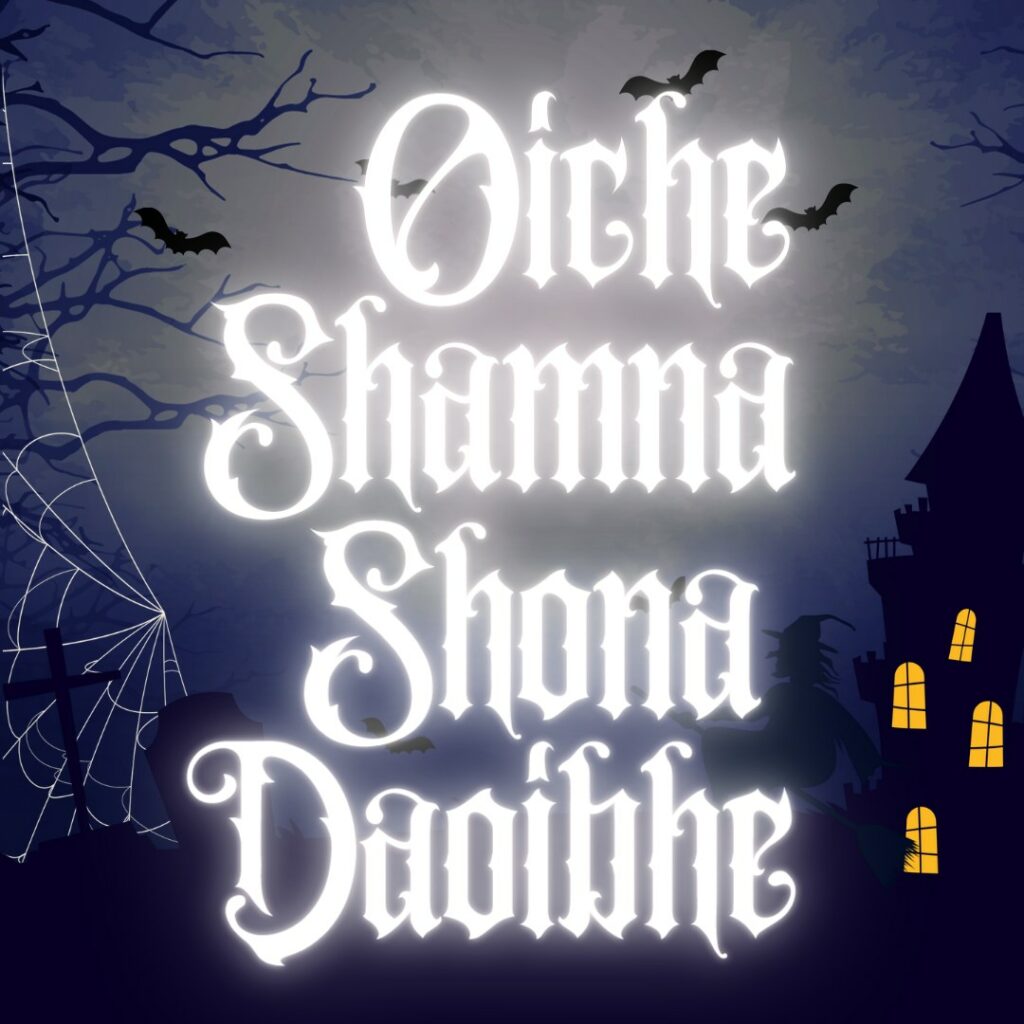
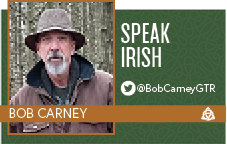
By Bob Carney
The Iroquois were one of the First Nation Tribes to make the area surrounding Lake Erie their home, long before the arrival of the Europeans. In stories they have passed down, they told of a creature they called Oniare (own-yar-eh).
Oniare is the Mohawk word for snake, and the Iroquois thought it described the serpent-like creature that lived in Lake Erie and the other Great Lakes. It’s head resembled a dog and it was supposed to breathe fire and poison. It was large enough to capsize canoes and devour those aboard.
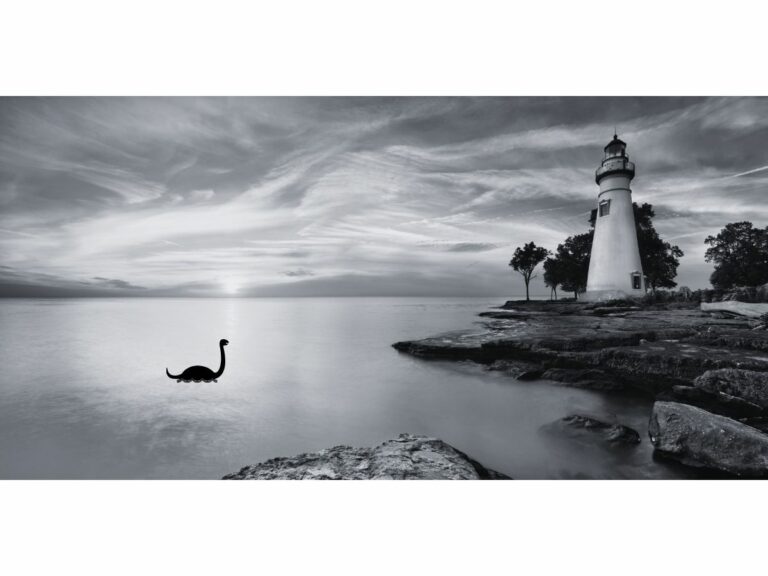
Today the legend lives on in the form of “Bessie.” She is often refered to as the American cousin to “Nessie” of Loch Ness. “Bessie” has been described differently over the years by those who have seen her, but most agree she has a dog-like head and large fins, a cross between a hound and a very large otter.
Cryptozoologists believe she is a decendant of the Plesiosaur, a massive marine reptile with a long neck that died out with the dinosaurs. The last reported sighting of “Bessie” was in the 1980s, when a couple of women from Akron were visiting the islands in the south bay area.
Irish mythology is full of serpent or dragon-like creatures that make their home in the lakes, rivers and streams of Ireland. The Dobhar Chú (do-war coo) translates to water hound. It has a dog-like head and also is thought to be a cross between a hound and an otter.
It prefers the deepest parts of a lake, river or even the sea, but it can also travel on land. The Dobhar Chú is very aggressive and feeds on human flesh. Recorded sightings date back to 1684, with Achill Island and Co. Mayo boasting the largest,(albeit unconfirmed) sightings in modern times.
Cryptozoologists also believe the Dobhar Chú is a migratory beast, easily capable of travel to a lake in Scotland as well as a Lake Erie vacation mecca. Some think the Dobhar Chú was merely following other Irish emigrants.
The word dobhar has a couple of meanings, water is the most common, but it can also mean dark or darkness. Cú (koo) is hound and cú dobhráin (koo do-rawn) is one name for an otter, but dobharchú is also used.
Madra (mah-dra) is a word meaning dog and uisce (ish-ka) is another word for water, so madra uisce would be a water dog, also an otter. Getting back to dobhar, dobhar each (do-war ahk) or water horse or steed is a hippopotamas.
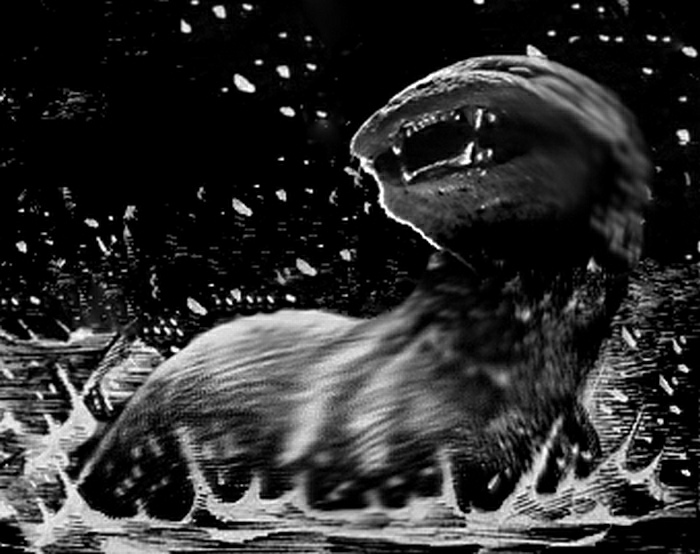
Madra is used to give descriptive names to a number of animals. Madra crainn,(mah-dra krann) is a tree dog or squirrel. Crann (krann) is tree. Cat crainn (kaht krann) or tree cat is the Irish name for a pine marten.
If you’ve been lucky enough to have laid eyes on one ,you would agree that they resemble a cat. Madra rua (mah-dra roo-ah) is red dog, a fox. Dearg (jer-ug) is the color red and rua is usually reserved for red hair or red color that is more brownish-red so a fox would never be called a madra dearg.
The wolf has a few different names, madra-allta (mah-dra all-ta) is wild dog and faolchú (fwaoll-koo) or wild hound is used as well. My favorite refers to the wolf as Mac Tíre (mahk tcheer-ih), son of the land, possibly because of the stories of the Osraí (see Speak Irish April 2023). Wolves had supernatural abilities in many tales in Irish mythology.
Madraí bána (mah-dree bahn-ah) uses the plural for dogs and a form of bán, the color white to give us white dogs or bee larvae. Madra mara (mah-dra mahr-ah) sea dog is one name for a seal. Rón (roon) is another, rón mór (roon mohr) would describe a sea lion. Bainirseach (bwin-er-shuck) would be a female seal.
Speaking of seals, sumugairle róin (smug-er-leh row-in) directly translates as seal snot, an apt descripition of a jellyfish I think! A very strong tide is refered to as madra taoide (mah-dra tee-deh) or tide dog. The Irish word for a pug is smutmhadra (smut-wah-dra), smut meaning a stump or short piece or portion. No offense to the little snorters!
In keeping with the season, sciathán leathair (shki-hawn law-er) is leather wing, a bat, although long ago they were called bas dorcha (bahs dor-kuh) dark death. Damhán alla (doo-wahn oll-eh) a little wild ox, a name that was given to the spider nearly 1,200 years ago and stuck.
A daddy long legs is a snáthaid an phúca (snaw-hud uhn foo-ka) a pooka’s needle. Sometimes they are called snáthaid an diabhail (snaw-hud uhn dee-il) the devils needle and that can also be used for a dragonfly.
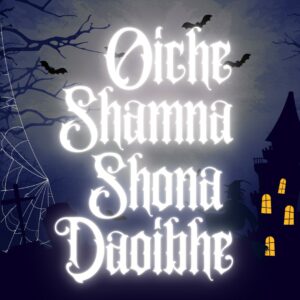
Samhain
The first of November is the feast of Samhain, a celebration marking the end of summer and the beginning of winter, a very important holiday for the ancient celts. It was more than just a feast day, every member of the community that was able was obligated to attend so matters of importance could be discussed and settled upon.
Great feasting did occur, with a heavy emphasis on pork and wine. Pork was thought to give immortality to those that consumed it, and the wine allowed a person to transcend reality (been there! and gain access to the world of the supernatural on the day when the living and the dead shared the same realm. All Saints Day, the Christian legacy of Samhain, has retained that aspect with the Communion of Saints.
Oíche Shamhna (ee-ha how-na) or Samhain Eve (sow-in) has evolved into Halloween for many of us in modern times. To wish someone Happy Halloween, you would say “Oíche Shamhna Shona duit!” (ee-ha how-na hun-uh gwit). If you were wishing it more than one person, you would change the ending and say, “Oíche Shamhna Shona daoibh!” (ee-ha how-na hun-uh yeev).
This Halloween, instead of the classic tales you’re familiar with, search out some of the great stories and tales from Ireland’s rich mythology. The story of the “Dearg Der” (jer-ug der) from Waterford City is one of my favorites and has inspired many modern tales of a female vampire. Dearg is the Irish word for red and der implies thirst. Dacre Stoker based one of the main characters in his novel “Dracul” after her. A great story about the origins of Bram Stoker’s classic.
Tabhair féirin dom, nó buailfidh mé bob ort! (toh-er fayr-een dom no bub ort).
Give me a gift or I’ll play a trick on you.
Trick or Treat!
Oiche Shamhna Shona Daoibh!
Slán go fóill!
Find this column and others from the October 2023 issue here!

*Bob Carney is a student of Irish language and history and teaches the Speak Irish Cleveland class held every Tuesday at PJ McIntyre’s. He is also active in the Irish Wolfhound and Irish dogs organizations in and around Cleveland. Wife Mary, hounds Rían, Aisling and Draoi and terrier Doolin keep the house jumping. He can be reached at [email protected]




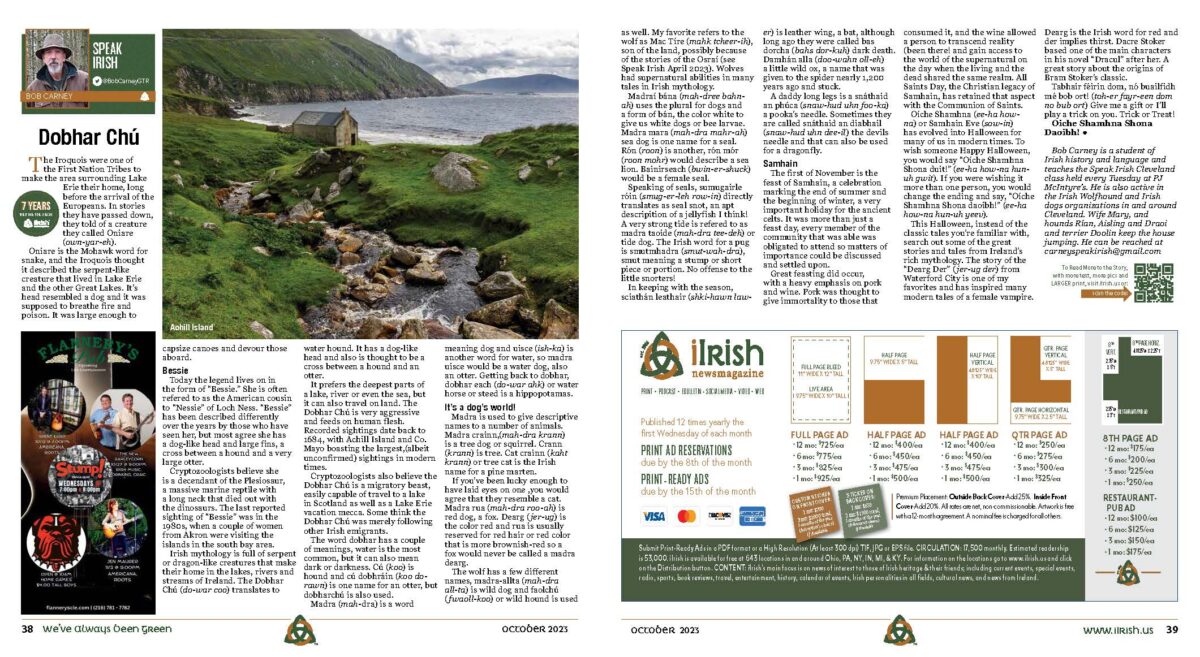

Monthly newsmagazine serving people of Irish descent from Cleveland to Clearwater. We cover the movers, shakers & music makers each and every month.
Since our 2006 inception, iIrish has donated more than $376,000 to local and national charities.
GET UPDATES ON THE SERIOUS & THE SHENANIGANS!